
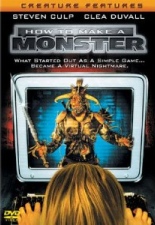 In 1994, writer/director George Huang turned his experience working as an executive assistant in Hollywood into the excellent dark comedy Swimming With Sharks, and it seemed like he was well on his way to bigger and better things. Unfortunately, his teen comedy follow-up, Trojan War, went straight to video, and it was all he could do to get a gig remaking a 1958 AIP flick for Showtime’s short-lived Creature Features film series.
In 1994, writer/director George Huang turned his experience working as an executive assistant in Hollywood into the excellent dark comedy Swimming With Sharks, and it seemed like he was well on his way to bigger and better things. Unfortunately, his teen comedy follow-up, Trojan War, went straight to video, and it was all he could do to get a gig remaking a 1958 AIP flick for Showtime’s short-lived Creature Features film series.
Assigned with How to Make a Monster, he completely jettisoned the original’s plot, instead telling the tale of a group of video game programmers who end up being stalked by their own virtual monster.
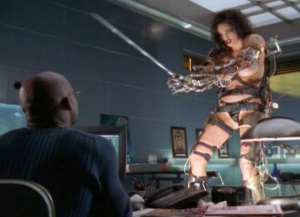 Deliberately cartoony, the movie makes no attempt at all to depict the authentic realities of game production, which wouldn’t be a problem if Huang hadn’t decided to rip himself off and use the film to re-tell the same story he told in his first and much, much, much better picture. By the time Monster ends with a newly jaded Clea DuVall (in the Frank Whaley role) schooling a new intern in the cold, cruel realities of the world, it becomes agonizingly clear that by his third film, Huang had already shot his entire creative wad, leaving him with nothing else to say.
Deliberately cartoony, the movie makes no attempt at all to depict the authentic realities of game production, which wouldn’t be a problem if Huang hadn’t decided to rip himself off and use the film to re-tell the same story he told in his first and much, much, much better picture. By the time Monster ends with a newly jaded Clea DuVall (in the Frank Whaley role) schooling a new intern in the cold, cruel realities of the world, it becomes agonizingly clear that by his third film, Huang had already shot his entire creative wad, leaving him with nothing else to say.
That said, the movie isn’t a complete waste of time, assuming you’re a fan of B-movie bombshell Julie Strain, who gifts the picture with a completely gratuitous nude scene (that you can probably find somewhere online). —Allan Mott

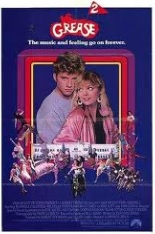
 I’ve spent far too much time trying to come up with reasons why I enjoy
I’ve spent far too much time trying to come up with reasons why I enjoy 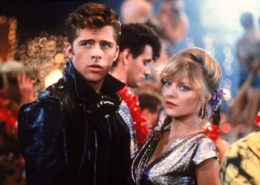 The film itself isn’t that much different than the first one, except in Grease 2, the innocent foreign exchange student is a dude (Caulfield) and the tough-but-sexy greaser is a chick (Pfeiffer). Like his cousin Sandy, Caulfield decides he has to slut it up to get the romantic attention he desires, so he buys a motorcycle and some tight leather clothes. Getting in his way is Zmed, Pfeiffer’s ex-boyfriend and current leader of the T-Birds.
The film itself isn’t that much different than the first one, except in Grease 2, the innocent foreign exchange student is a dude (Caulfield) and the tough-but-sexy greaser is a chick (Pfeiffer). Like his cousin Sandy, Caulfield decides he has to slut it up to get the romantic attention he desires, so he buys a motorcycle and some tight leather clothes. Getting in his way is Zmed, Pfeiffer’s ex-boyfriend and current leader of the T-Birds.
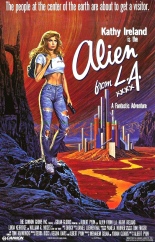
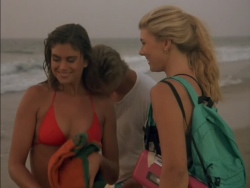 Cursed with the kind of voice that causes dogs to howl in misery whenever she speaks, her is further diminished by a script that requires her to essay the role of the whiniest protagonist in the history of narrative storytelling. At times, the dialogue suggests that this was a deliberate choice on the part of director/co-writer Albert Pyun. Forced to cast Ireland as his lead, he obviously decided to turn her greatest weakness into the film’s main running joke, but chose to do so in a way that only makes watching it more of a chore than it might have otherwise been.
Cursed with the kind of voice that causes dogs to howl in misery whenever she speaks, her is further diminished by a script that requires her to essay the role of the whiniest protagonist in the history of narrative storytelling. At times, the dialogue suggests that this was a deliberate choice on the part of director/co-writer Albert Pyun. Forced to cast Ireland as his lead, he obviously decided to turn her greatest weakness into the film’s main running joke, but chose to do so in a way that only makes watching it more of a chore than it might have otherwise been.
 You just have to look at its credits to appreciate what a one-of-a-kind movie
You just have to look at its credits to appreciate what a one-of-a-kind movie  In the movie, James Coburn plays a games-obsessed producer who has gathered a group of fellow industry folks (including Cannon, Richard Benjamin, James Mason, Raquel Welch, Joan Hackett and Ian McShane) for a weeklong trip on his private yacht. All of his guests have two things in common: They harbor a potentially embarrassing secret their host knows about, and they were all present at Coburn’s house the night his wife, the titular Sheila, died under mysterious circumstances.
In the movie, James Coburn plays a games-obsessed producer who has gathered a group of fellow industry folks (including Cannon, Richard Benjamin, James Mason, Raquel Welch, Joan Hackett and Ian McShane) for a weeklong trip on his private yacht. All of his guests have two things in common: They harbor a potentially embarrassing secret their host knows about, and they were all present at Coburn’s house the night his wife, the titular Sheila, died under mysterious circumstances.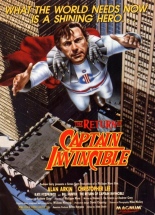
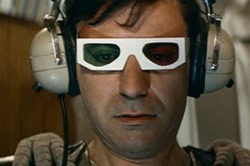 Beyond a lazy script, lackluster direction and horrible songwriting, the movie’s biggest flaw is the casting of Kate Fitzpatrick as the female detective who lures Invincible out of retirement. Not only is she a terrible actress, but she also has all of the sex appeal of a
Beyond a lazy script, lackluster direction and horrible songwriting, the movie’s biggest flaw is the casting of Kate Fitzpatrick as the female detective who lures Invincible out of retirement. Not only is she a terrible actress, but she also has all of the sex appeal of a